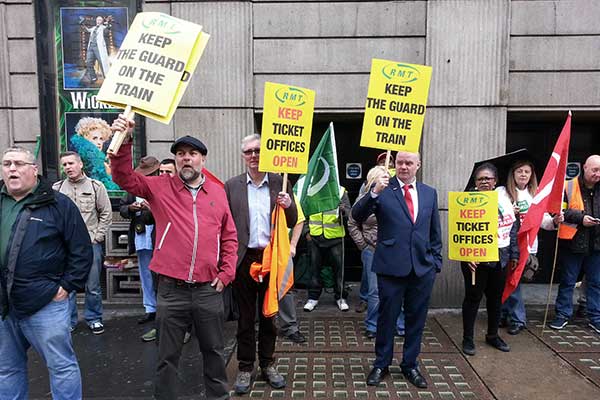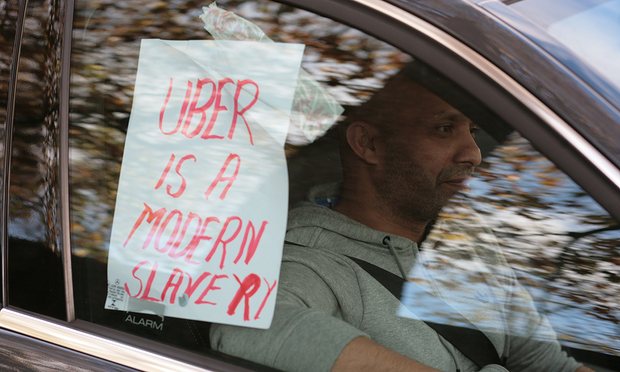Looking back on some of the prominent mobilisations of 2016, the UK saw industrial action taken by Southern Rail train drivers and conductors, Royal Mail counter workers, British Airways cabin crew, and Topshop employees, to name a few.
As we look towards 2017 this post explores if Trade Unions still hold enough power to successfully win rights for workers?
In the past year, Unions have seen what Gaventa describes as “visible power: the observable decision making” (2006, p29) of the Tory Government with the introduction of a new law under the Trade Union Act requiring a 50% turnout in strike ballots of which 40% must vote yes before any action can go ahead.
More recently and motivated by the Southern Rail strikes, one Tory MP Chris Philp proposed a bill which would call for strikes in companies considered as critical national services to be deemed ‘proportionate and reasonable’ in the view of a high court judge before going ahead (Elgot and Asthana, 2016).
Increasingly, it appears that it is the Government who hold the power over workers’ rights and their right to unionise and take action.
 Source: Socialist Worker
Source: Socialist Worker
Are Trade Unions still making a difference?
Without Unions, people could see their pension rights stolen, unfair working conditions, wage stagnation, zero-hour contracts and unachievable targets.
Unions protect the rights of hard working and often marginalised people.
In the past year Junior Doctors have negotiated a better deal than the British Medical Association first predicted, whilst Uber drivers won a court battle to be paid the national living wage via an employment tribunal led by the GMB Union.

For Unions to continue to work for the people and increase membership, it is important to understand what power it is that they do hold.
Using Gaventa’s power cube to analyse the benefits of Unions, I would maintain that one of the most important characteristics of a Union is their ability to create a sense of “Power ‘with’” referring to “the synergy which can emerge through partnerships and collaboration with others or through processes of collective action and alliance building” (Gaventa, 2006, p24).
It is through this collective identity that industrial action often results in created spaces which are “claimed by less powerful actors from or against the power holders” and thinking specifically about the tactic of picketing, created spaces by definition allow people to “gather to debate, discuss and resist” (Gaventa, 2006, p27).
Despite the restrictions in law and changing economic climate making it more difficult for workers to strike in the first instance, Unions are still able to galvanise support and protect workers through the power structures they possess.
What does the future hold?
But this doesn’t mean Unions plan to continue as they have been. In her New Year message, Trade Union Congress General Secretary Frances O’Grady said: “As we look to 2017, it’s clear that we need a new bargain between those at the top – enjoying soaring boardroom pay and insulated from economic change – and ordinary working people. Britain succeeds when working people succeed. And strong Unions are the only way to make sure working people get their share in Britain’s success.”
Word count: 520
References
Elgot, J. and Asthana, A. (2016). Tories pressure Theresa May to bring in hardline anti-strike legislation. The Guardian. Available from https://www.theguardian.com/uk-news/2016/dec/20/tories-pressure-theresa-may-hardline-anti-strike-legislation-southern [Accessed 3 January 2017]
Gaventa, J. (2006). Finding the Spaces for Change: A Power Analysis. IDS Bulletin, 37(6), p 23-33. Available from https://learning.westminster.ac.uk/bbcswebdav/pid-1769078-dt-content-rid-4458107_1/courses/7MEDS013W.1.2016/finding_spaces_for_change.pdf [Accessed 3 January 2017]

January 4, 2017 at 11:08 pm
Interesting read!
I’d be interested to explore further the trade off that trade unions (excuse the pun) see between a positive public image or image in the media and ahieving their objectives when faced with cuts or changes in staff conditions or remuneration.
Almost wish I had done a blog on this now!
Great read 🙂
LikeLike
January 5, 2017 at 2:58 pm
YES! This is a great blog. The strength of the union lies in it’s members and their active participation in lay democracy or grass roots democracy first. Strikes really are a last resort.
About strikes that disrupt the general public – passengers, patients or consumers – I think one to one conversations (frames! Using the right language) about the role of unions in wider society could be a good way to counteract the media representation. If you think about the Southern Rail strike, the RMT has maintained despite lots of goading that the strike is about health and safety for passengers as well as protecting workers.
See here
http://www.telegraph.co.uk/news/2016/12/13/southern-strike-passenger-misery-amid-worst-rail-disruption/
http://www.standard.co.uk/news/transport/southern-rail-strike-passengers-oppose-plans-to-remove-guards-from-trains-a3249651.html
Mmm another blog post….methinks.
LikeLiked by 1 person